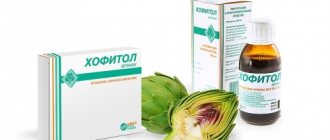Ultravist, 370 mg iodine/ml, solution for injection, 50 ml, 10 pcs.
General information
Before use, Ultravist® should be warmed to body temperature.
Before administration, you must carefully inspect the bottle. If the integrity of the bottle is damaged, there is a significant change in color, or visible particles (including crystals) are detected, the drug should not be used.
Since Ultravist® is a highly concentrated solution, crystallization may occur (the appearance of milky cloudiness and/or sediment or crystals in suspension), which is observed extremely rarely.
To administer a contrast agent solution, it is necessary to use an automatic injector or other special instruments while maintaining sterility. Ultravist® should be drawn into a syringe or infusion pump immediately before administration.
You cannot puncture the rubber stopper more than once to avoid getting a large number of microparticles into the prepared solution from the stopper. Therefore, to pierce the rubber stopper and draw contrast agent, it is recommended to use cannulas with long tips with a diameter of no more than 18 G (marked cannulas with a side hole of the Nocore-Admix type are best suited).
Unused solution of the drug after opening the bottle should be destroyed.
Vials containing 200 and 500 ml of the drug should be used only for intravascular administration. For administration, it is necessary to use an automatic injector or other equipment that ensures the sterility of the drug. The instructions for use of the auto-injector or other equipment must be followed. The drug, unused after opening the bottle, can be used within 10 hours after the first opening. It should then be destroyed.
Cartridges should be used in accordance with the instructions supplied with the equipment for using the cartridges. Unused solution from the cartridge should be destroyed after use.
Doses for intravascular administration
Intravascular administration of a radiocontrast agent, if possible, is best done with the patient in the supine position.
In patients with severe renal and cardiovascular insufficiency, as well as in general poor health, the dose of contrast agent should be as low as possible. In such patients, it is recommended to monitor renal function for at least 3 days after the examination.
The dose of contrast agent should correspond to age, body weight, the clinical problem being solved and the research technique. The doses given below should be considered as recommendations only; they represent usual doses for an average adult weighing 70 kg. Doses are expressed in ml for a single injection or per kg of body weight.
Generally, doses of up to 1.5 g iodine/kg are well tolerated. Between individual injections, the body should be given sufficient time to drain fluid from the interstitial space to normalize the increased serum osmolality. If necessary, in some cases the total dose should be exceeded 300–350 ml; in adults, the introduction of water and possibly electrolytes is indicated.
Recommended doses for single injections
Conventional angiography
| Type of study | Brand of drug Ultravista® (iodine concentration mg/ml) | Dose, ml |
| Angiography of the aortic arch | 300 | 50–80 |
| Selective angiography | 300 | 6–15 |
| Thoracic aortography | 300/370 | 50–80 |
| Abdominal aortography | 300 | 40–60 |
| Arteriography: | ||
| upper limbs | 300 | 8–12 |
| lower limbs | 300 | 20–30 |
| Angiocardiography: | ||
| ventricles of the heart | 370 | 40–60 |
| coronary angiography | 370 | 5–8 |
| Venography: | ||
| upper limbs | 240 | 50–60 |
| 300 | 15–30 | |
| lower limbs | 240 | 50–80 |
| 300 | 30–60 | |
Intravenous digital subtraction angiography (DSA)
To perform DSA of large vessels, Ultravist® injection solutions containing 300 or 370 mg iodine/ml in a volume of 30–60 ml are used. The drug is administered as a bolus at a rate of 8–12 ml/s into the cubital vein or at a rate of 10–20 ml/s through a catheter into the vena cava. The contact time of the radiocontrast agent with the vein wall can be reduced by quickly administering an isotonic sodium chloride solution immediately after Ultravist® as a bolus.
For adults:
30–60 ml of Ultravist® injection solution 300 and 370 mg iodine/ml.
Intra-arterial DSA
When performing intra-arterial DSA, in contrast to conventional angiography, smaller amounts of the drug Ultravist® and its lower concentrations can be administered.
Computed tomography (CT)
If possible, Ultravist® should be injected into a vein as a bolus using an auto-injector. For slow scanning only, approximately half the dose should be administered as a bolus and the remainder over 2 to 6 minutes to ensure a relatively constant drug concentration in the blood.
Helical CT and especially multi-slice CT
allows you to obtain a large amount of data with one breath hold. To obtain the optimal diagnostic effect from an intravenous bolus (80–150 ml of Ultravist® solution for injection containing 300 mg/ml iodine) in the examined area (peak, time and duration of contrast), it is recommended to use an automatic injector and control the time interval from start of X-ray contrast agent administration before scanning.
Whole body CT
The required doses of radiocontrast agent and the rate at which they are administered depend on the organ being examined, the diagnostic problem being solved, and especially on differences in scanning and the duration of image reconstruction.
CT head
Adults:
Ultravist® solution for injection 240 mg iodine/ml: 1.5–2.5 ml/kg.
Ultravist® solution for injection 300 mg iodine/ml: 1.0–2.0 ml/kg.
Ultravist® solution for injection 370 mg iodine/ml: 1.0–1.5 ml/kg.
Intravenous urography
Due to the physiologically weak concentrating ability of immature kidney nephrons in children, relatively high doses of radiocontrast agent are required.
The following doses of Ultravist® are recommended:
| Age | Amount of iodine, g/kg | Dose of Ultravist®, ml/kg | ||
| 240 mg iodine/ml | 300 mg iodine/ml | 370 mg iodine/ml | ||
| Newborns (<1 month) | 1,2 | 5,0 | 4,0 | 3,2 |
| Young children (1 month - 2 years) | 1,0 | 4,2 | 3,0 | 2,7 |
| Children (2–12 years old) | 0,5 | 2,1 | 1,5 | 1,4 |
| Children over 12 years old and adults | 0,3 | 1,3 | 1,0 | 0,8 |
If necessary, in some cases in adults, the indicated doses may be increased.
Snapshot time
The time frame for taking images after administration of the drug Ultravist® with an iodine content of 300 or 370 mg/ml with an administration duration of 1–2 minutes (3–5 minutes in the case of administration of the drug Ultravist® with an iodine content of 240 mg/ml) is: for renal parenchyma - 3–5 minutes (5–10 minutes in case of administration of the drug Ultravist® containing 240 mg/ml iodine); for visualization of the renal pelvis and ureter system - 8–15 minutes (12–20 minutes in the case of administration of the drug Ultravist® with an iodine content of 240 mg/ml) after the start of the administration of the radiocontrast agent.
The younger the patient, the earlier the picture is taken. Typically, the first image should be taken 2–3 minutes after administration of the radiocontrast agent. In newborns, children under 2 years of age, and patients with impaired renal function, imaging at a later time may improve visualization of the urinary tract.
Doses for intrathecal administration
Adults:
dosages may largely depend on the clinical problem being solved, the method and area of examination.
If there is equipment that allows you to record an image in all projections without changing the position of the patient’s body and with the introduction of a radiocontrast agent under fluoroscopic control, smaller volumes of the diagnostic drug may be sufficient.
Recommended dose for individual studies
Myelography
The amount of Ultravist® 240 mg iodine/ml is up to 12.5 ml.
The usual dose of Ultravist® 240 mg iodine/ml is 3 g iodine (12.5 ml) and should not be exceeded for one study.
After the examination, the radiocontrast agent should be directed to the lumbar region, which is achieved by placing the patient in a sitting position or raising the head on the bed by 15° for at least 6 hours.
Children: the safety and effectiveness of Ultravist® during myelography have not been studied.
Doses when administered into body cavities
When performing arthrography, endoscopic retrograde cholangiopancreatography (ERCP) and hysterosalpingography, the administration of a radiocontrast agent should be carried out under fluoroscopic control.
Recommended Doses for Individual Studies
The dose may greatly depend on the age, body weight, general condition of the patient, as well as on the clinical problem being solved, the technical equipment used and the area of examination. Below are the average doses recommended for normal adults in a single study.
Arthrography:
5–15 ml Ultravist® 240, 300 or 370 mg iodine/ml.
Hysterosalpingography:
10–25 ml Ultravist® 240 mg iodine/ml.
ERHP:
the dose depends on the clinical problem being solved and the size of the visualized structure.
Other cavities:
the dose depends on the clinical problem being solved and the size of the visualized structure.
Side effects
Allergic reactions: uncommon - hypersensitivity reactions, anaphylactoid reactions, urticaria, itching, rash, erythema; rarely - anaphylactic shock (including fatal cases), vascular edema, mucocutaneous syndrome (for example, Stevens-Johnson syndrome or Lyell's syndrome).
From the endocrine system: rarely - changes in thyroid function, thyrotoxic crisis.
From the central nervous system and peripheral nervous system: often - headache; infrequently - dizziness, anxiety; rarely - paresthesia, hypoesthesia, confusion, fear, agitation, amnesia, speech impairment, drowsiness, loss of consciousness, coma, tremor, convulsions, paresis, paralysis, cerebral ischemia, stroke, transient cortical blindness.
From the side of the organ of vision: infrequently - blurred vision, visual disturbances; rarely - conjunctivitis, lacrimation.
On the part of the hearing organ: rarely - hearing loss.
From the cardiovascular system: infrequently - arrhythmia, vasodilation; rarely - palpitations, chest pain, tightness, bradycardia, tachycardia, cardiac arrest, heart failure, myocardial ischemia, infarction, cyanosis, increased or decreased blood pressure, shock, vasospasm, thromboembolism.
From the respiratory system: infrequently - sneezing, cough; rarely - rhinitis, shortness of breath, swelling of the mucous membranes, bronchial asthma, dysphonia, swelling of the larynx, pharynx, tongue, face, bronchospasm, spasm of the larynx/pharynx, pulmonary edema, respiratory failure, respiratory arrest.
From the digestive system: often - nausea; infrequently - vomiting, taste disturbance; rarely - pharyngeal irritation, dysphagia, swelling of the salivary glands, stomach pain, diarrhea.
From the urinary system: infrequently - renal dysfunction; rarely - acute renal failure.
From the body as a whole: often - a feeling of warmth or pain; infrequently - malaise, chills, increased sweating, fainting; rarely - pallor, changes in body temperature.
Local reactions: rarely - swelling, local pain, slight heat and swelling, inflammation and tissue damage in case of extravasal administration.
Drug interactions
Concomitant use of Ultravist with antipsychotics and antidepressants may lower the seizure threshold, increasing the risk of reactions associated with the use of a contrast agent.
In patients with diabetic nephropathy taking biguanides, lactic acidosis may develop when a contrast agent is administered. To prevent its development, you should stop taking biguanides 48 hours before the X-ray contrast study and resume taking them only after a control study shows no impairment of renal function.
Delayed reactions (eg, fever, rash, flu-like symptoms, joint pain, and itching) with contrast agents are more common in patients receiving interleukin.


